Slaves of society
Hundreds of years ago escaped slaves sought refuge in the valleys of Mafate. These slaves had to work to sustain the colonial, French society. My most pessimistic self would dare say that even today Mafate attracts slaves of the modern, high-tech world. The kind of people seeking a temporary escape from the relentless accessibility and constant evaluation of the online world. I enjoy remote places for this very reason. I can shut myself off from the world and come to myself. Time for inner reflection is rare these days because, like it or not, we’re all caught up in society’s relentless rat race. Here in Mafate, however, time seems to stand still for a moment which is pure enjoyment!
To emphasize the timelessness, I have converted the photos.
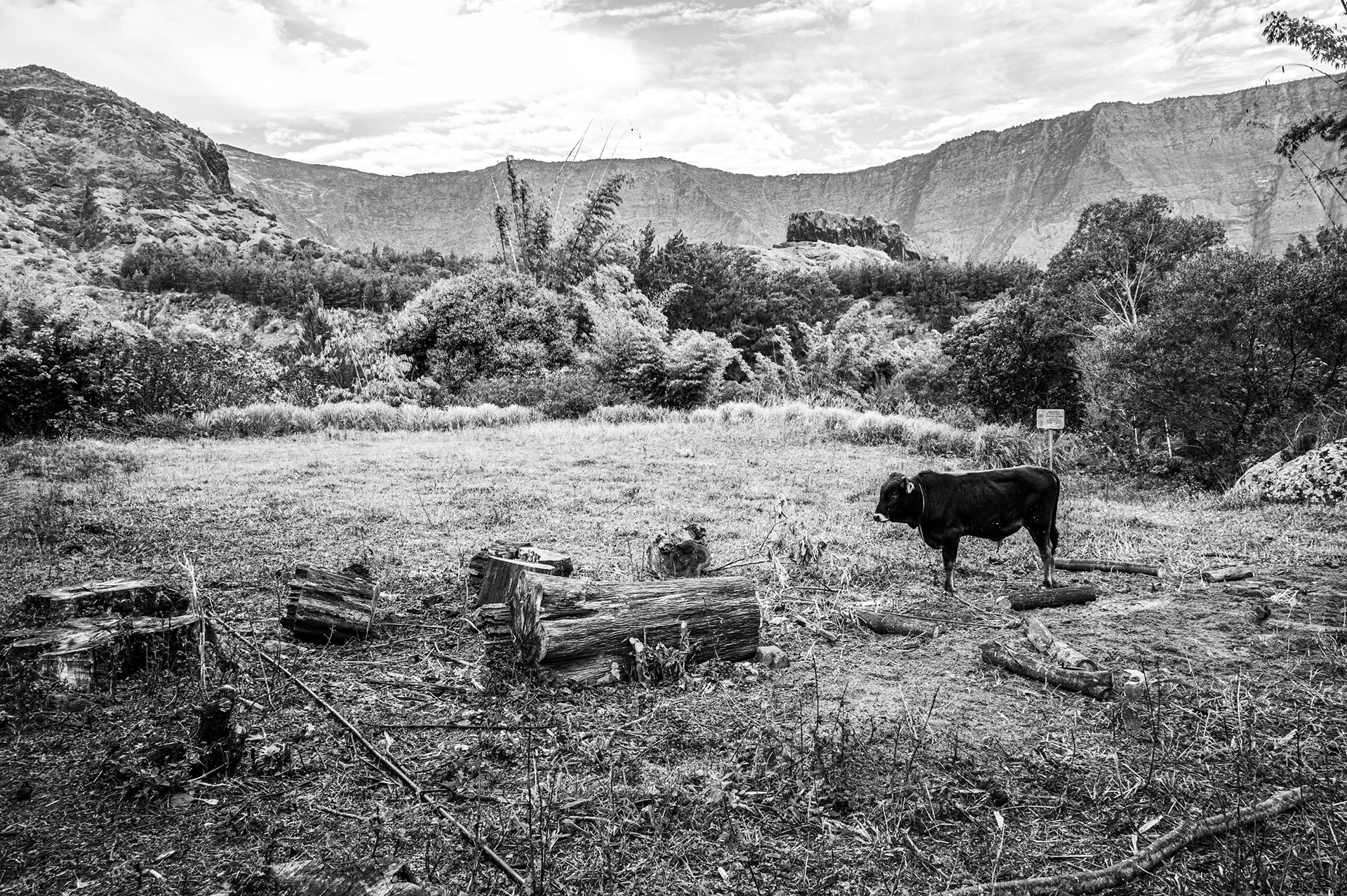
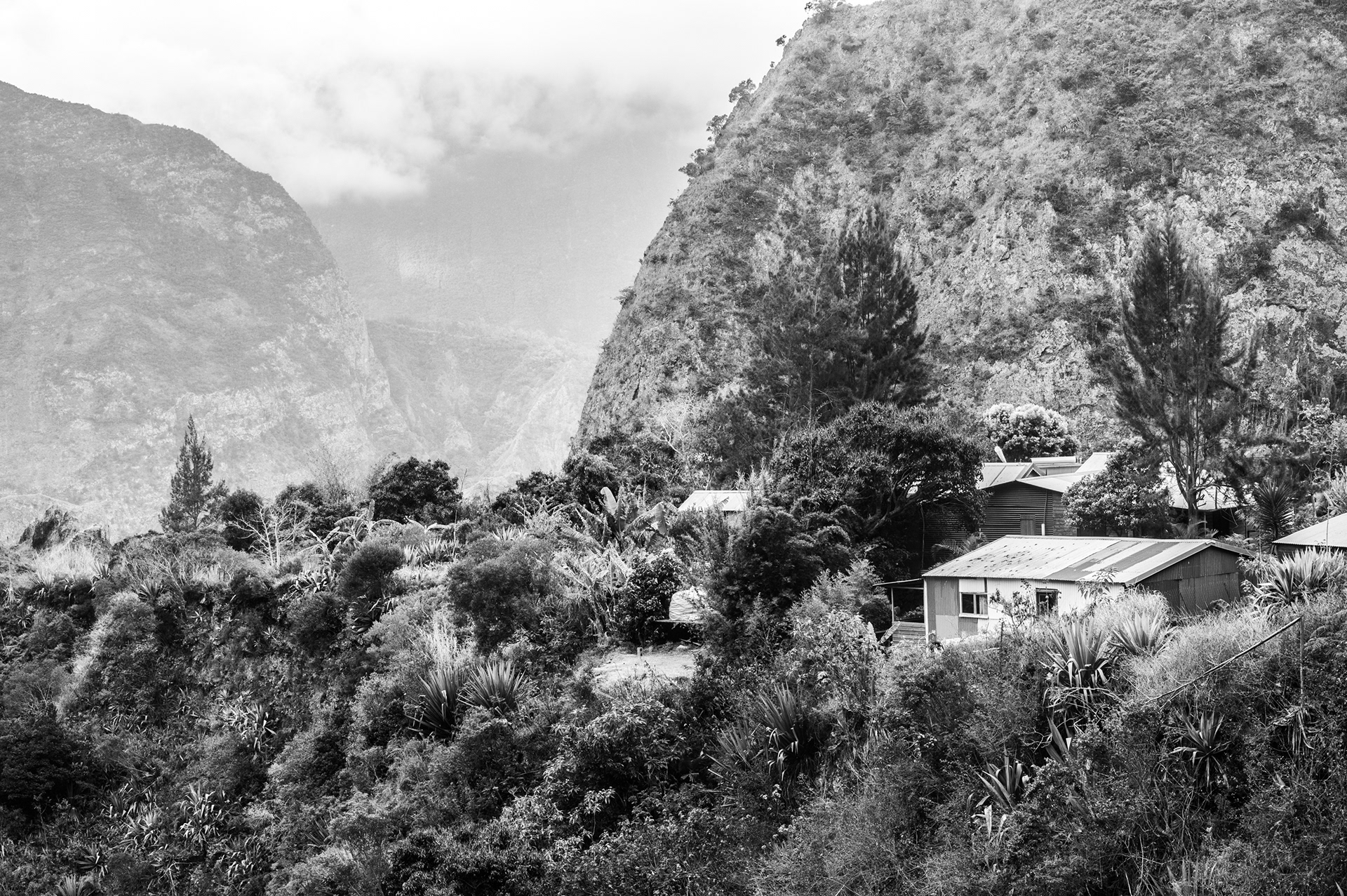
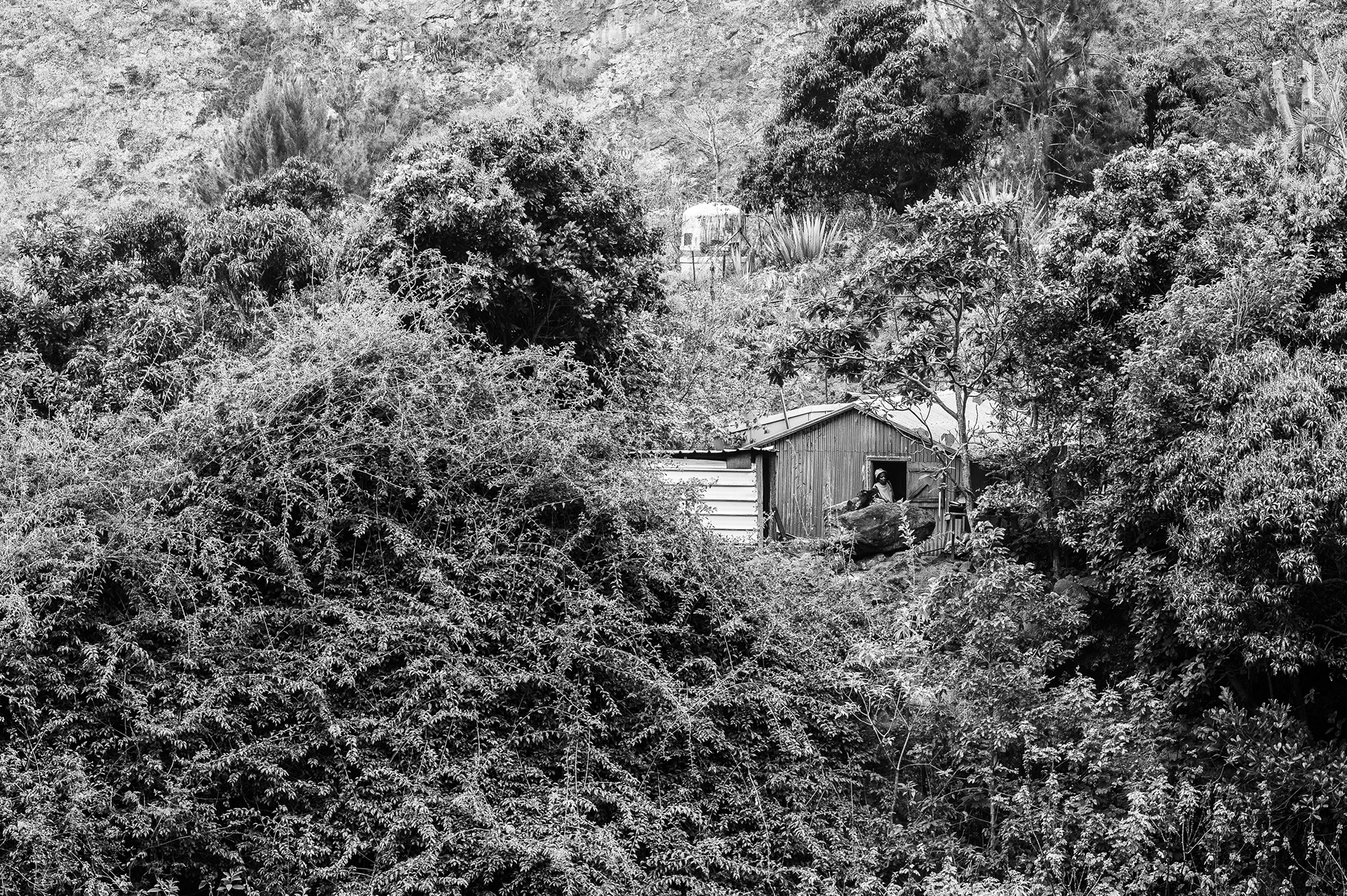
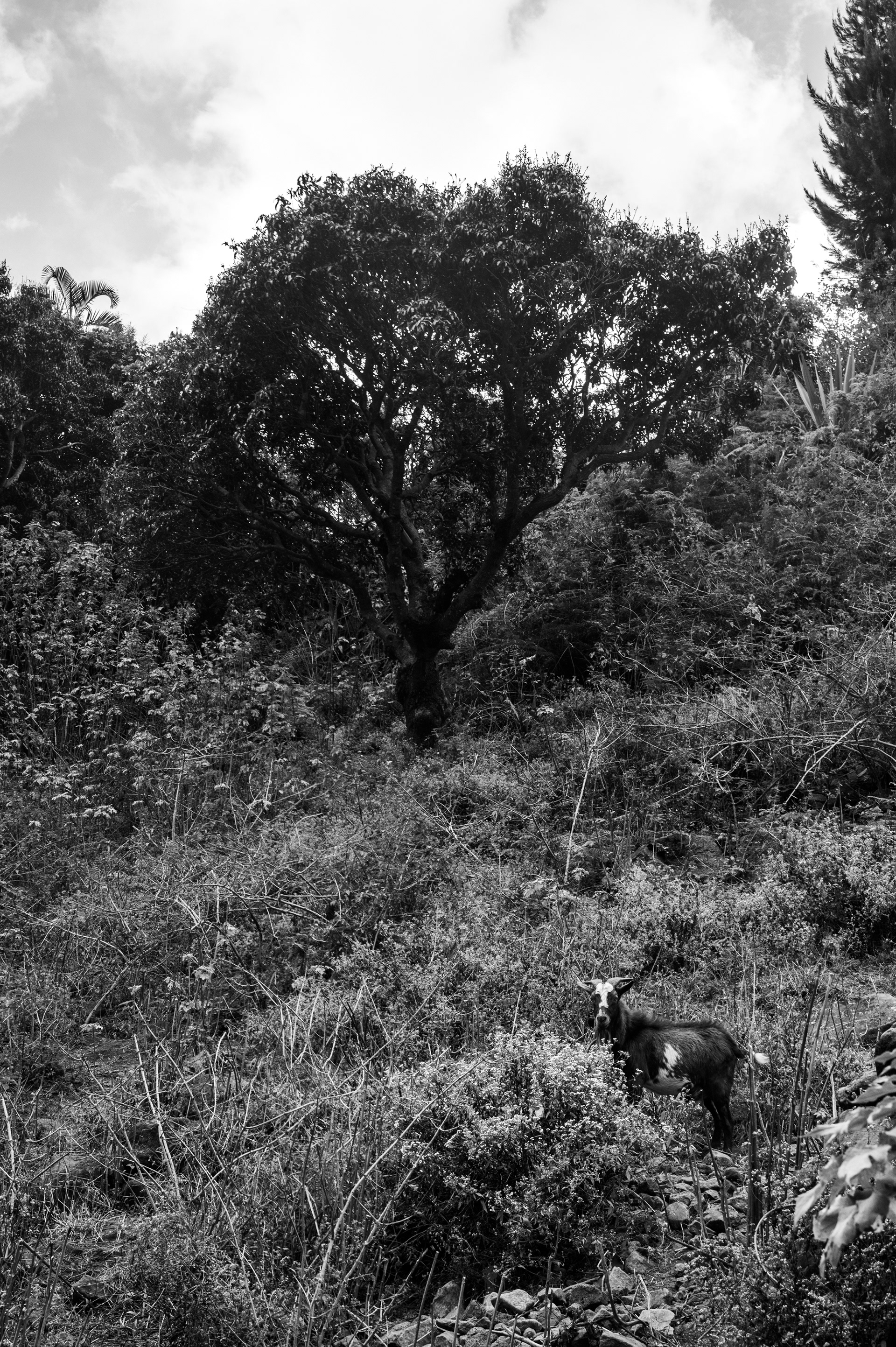
The gate of Mafate
As mentioned earlier, Mafate can only be reached on foot or by helicopter. I entered Mafate three times via the south by following the Rivière des Galettes. The first two times I descended from Roche Écrite via Dos d'Âne, a sleepy village in the highlands. Depending on the amount of clouds in the valley, the views here are truly breathtaking.
You should not have a fear of heights here, as the valley is only a few meters away and plunges up to 1,400 meters into the depth. Mascarene swiftlets (related to our swifts) and Mascarene martins will keep you company as they skim along the rocks and fly by cooing. With some luck, you will also see white tailed tropicbirds, flying lower along the forested cliffs in search of nesting opportunities.
You should not have a fear of heights here, as the valley is only a few meters away and plunges up to 1,400 meters into the depth. Mascarene swiftlets (related to our swifts) and Mascarene martins will keep you company as they skim along the rocks and fly by cooing. With some luck, you will also see white tailed tropicbirds, flying lower along the forested cliffs in search of nesting opportunities.
The third time, I entered Mafate from the heights by following the Canalisation des Orangers. This drainage channel allows water to flow to the bone-dry west side of the island. As you walk along the ridge, with 1,000 meters of rock both above and below you, you realize what immense work it was to complete this engineering feat in the 1960s, after ten years of work.
Also fun: along the Canalisation you walk past the Cascade des Flamands, a measly waterfall. Down in the depths lies Îlet des Flamands, a settlement founded by Flemish people. Besides escaped slaves, poor farmers (Les Petits Blancs) also sought a better life in Mafate back in the days.
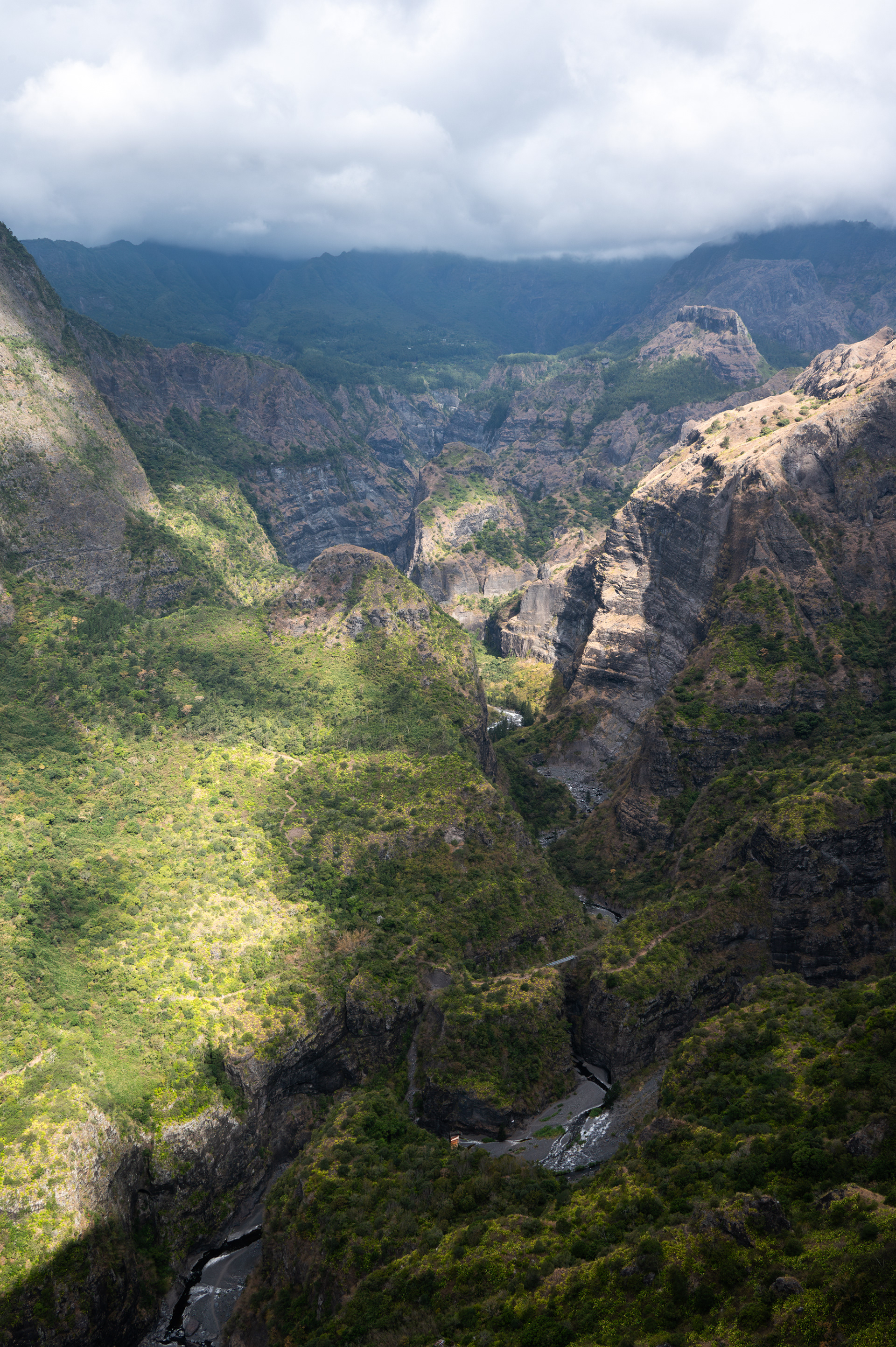
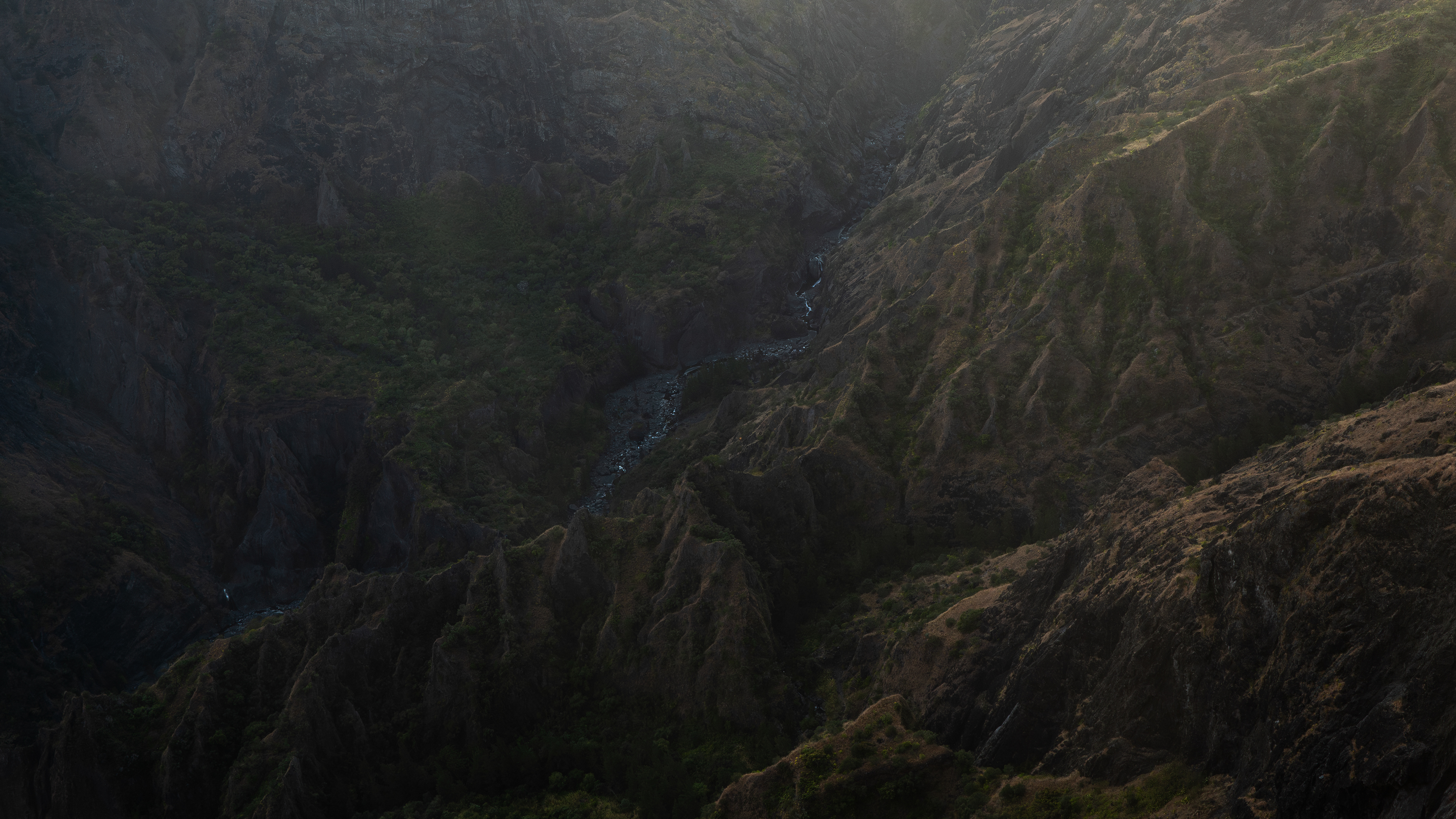
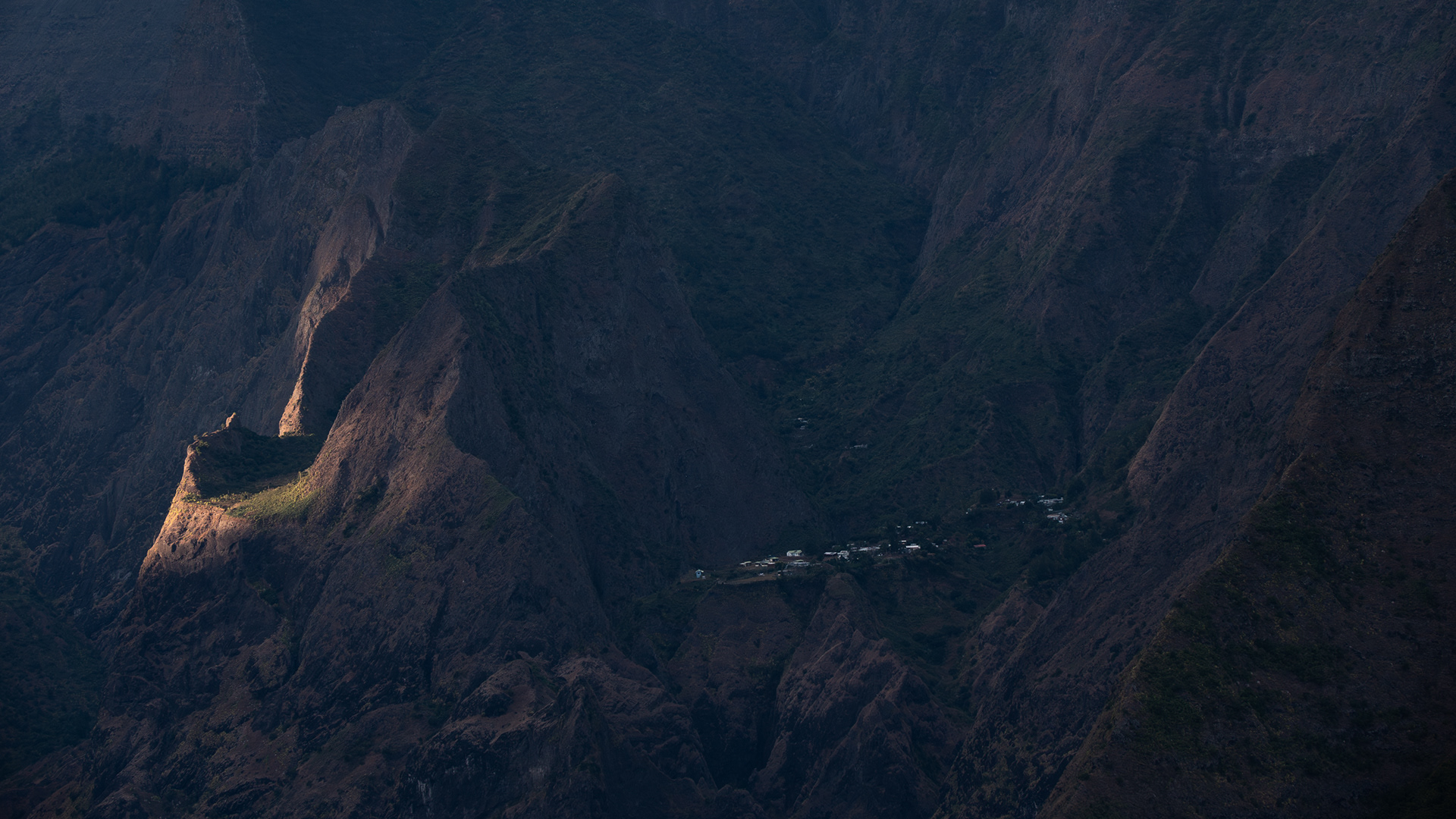
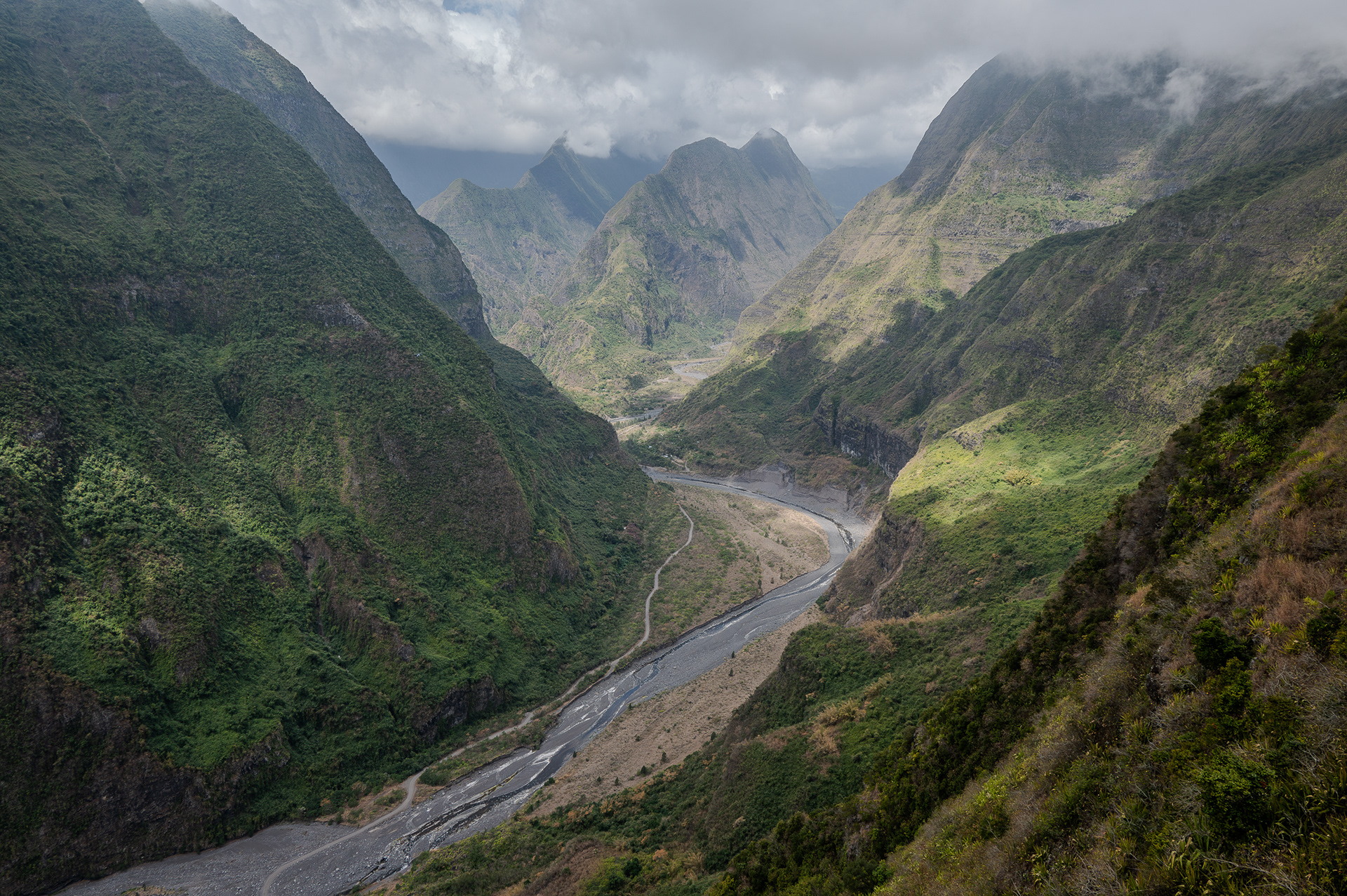
Cuddly mountain ridges
Once you enter Mafate, your mouth falls open. The small settlements - called îlets - are snugly situated on the few flat plateaus that Mafate boasts. What I perhaps liked best is how the rising sun creates a spectacle of light. Slowly but surely, more and more sunbeams pierce the razor-sharp mountain ridges. Although hiking up these mountains through the day is a brutal affair, in the morning, the sparsely lit flanks have something gentle, almost cuddly. I always take a deep breath and feel intensely happy.
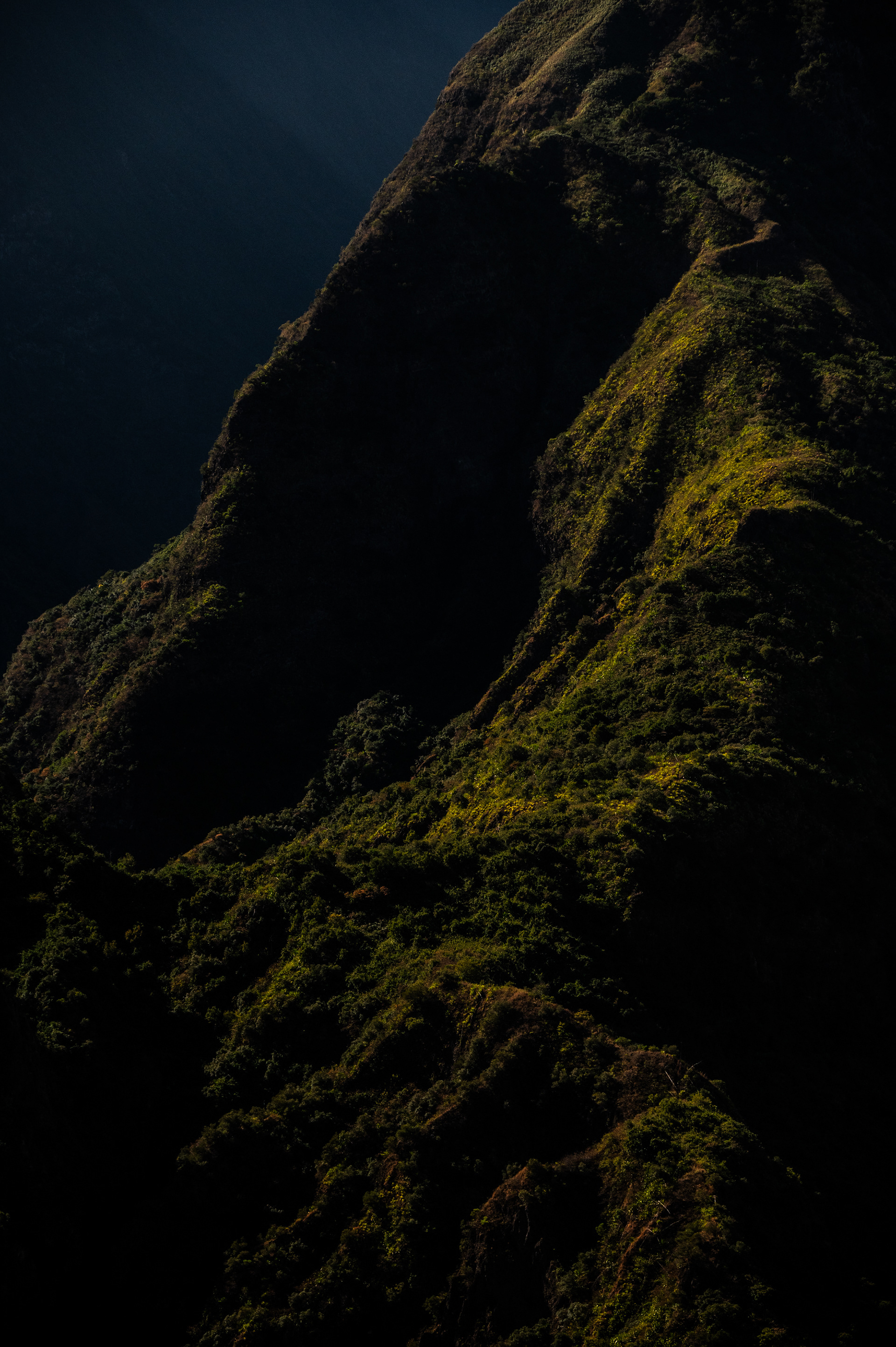
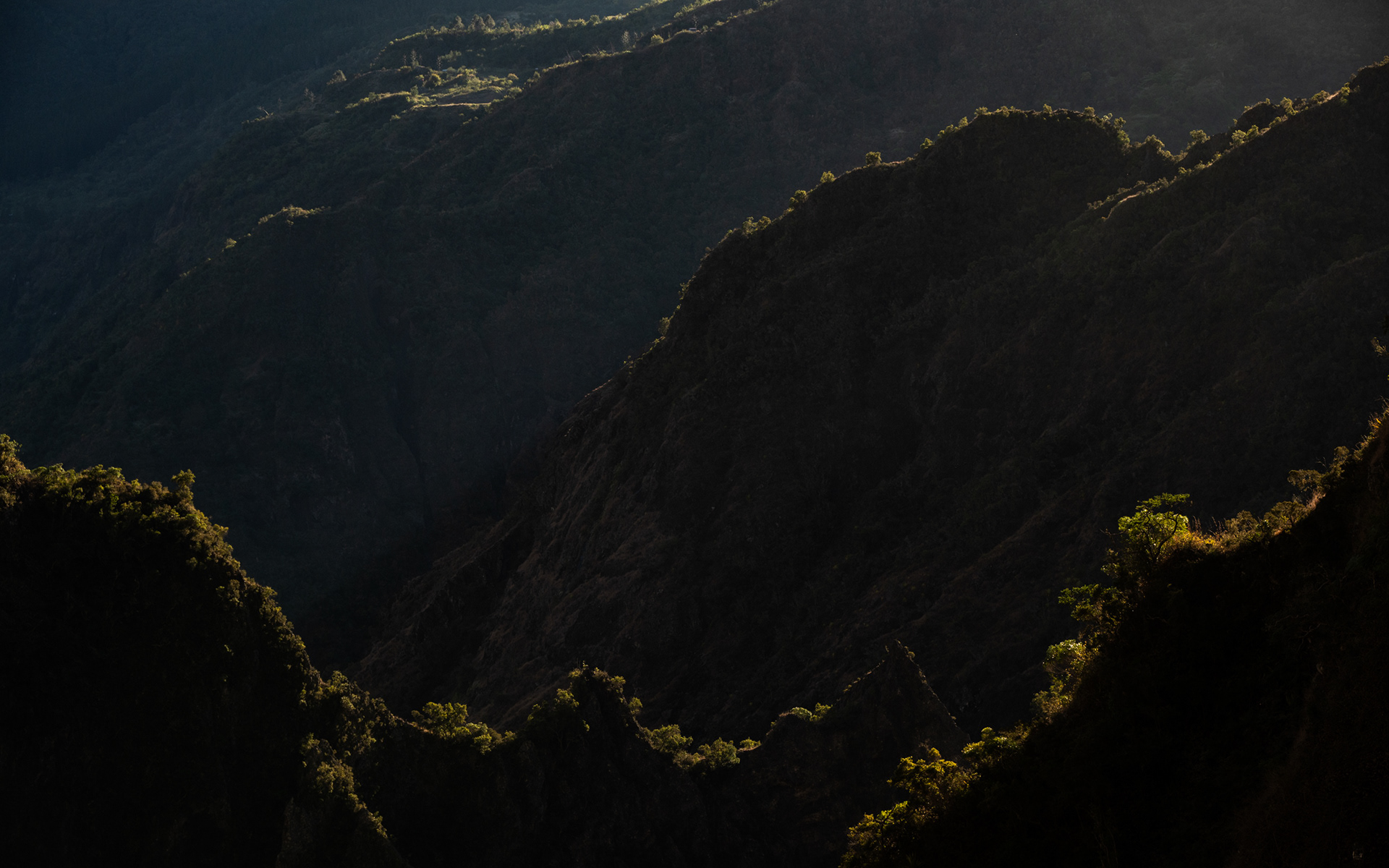
Another equally beautiful spectacle is how the clouds roll into the valleys like a blanket in the afternoon. It is a sign that walking may be slower and that the day is almost over. It is striking that twilight hardly exists here, so close to the equator. Here, the Earth's light switch has only two settings: fully on or entirely off. The clouds make you forget the hard work of climbing. It is a handy system made by nature: having people stare at you with open mouths in the morning and evening, while you brutally wear them down during the day, but they always forget this. I do like the hard, no-nonsense character of this landscape.
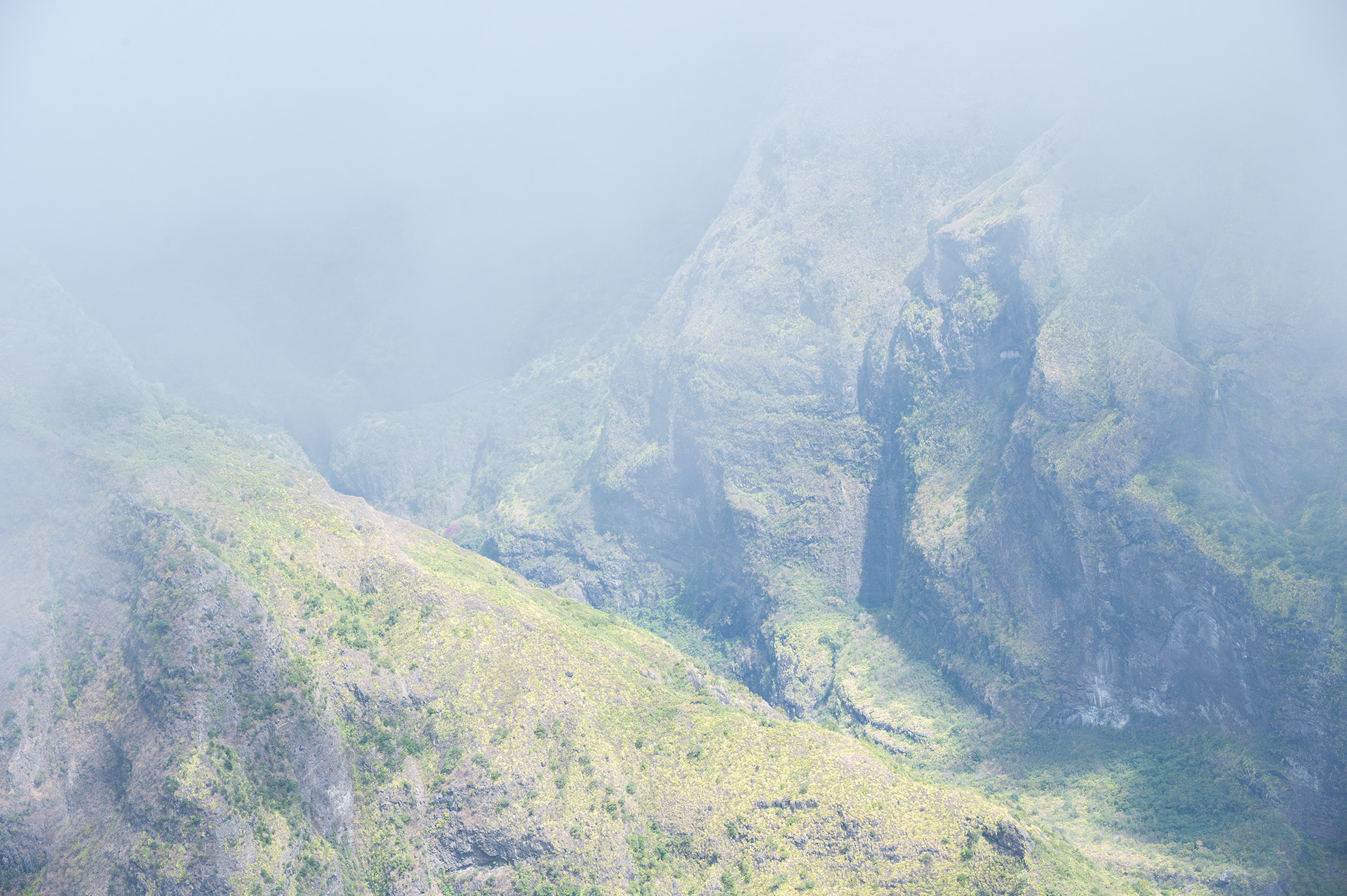
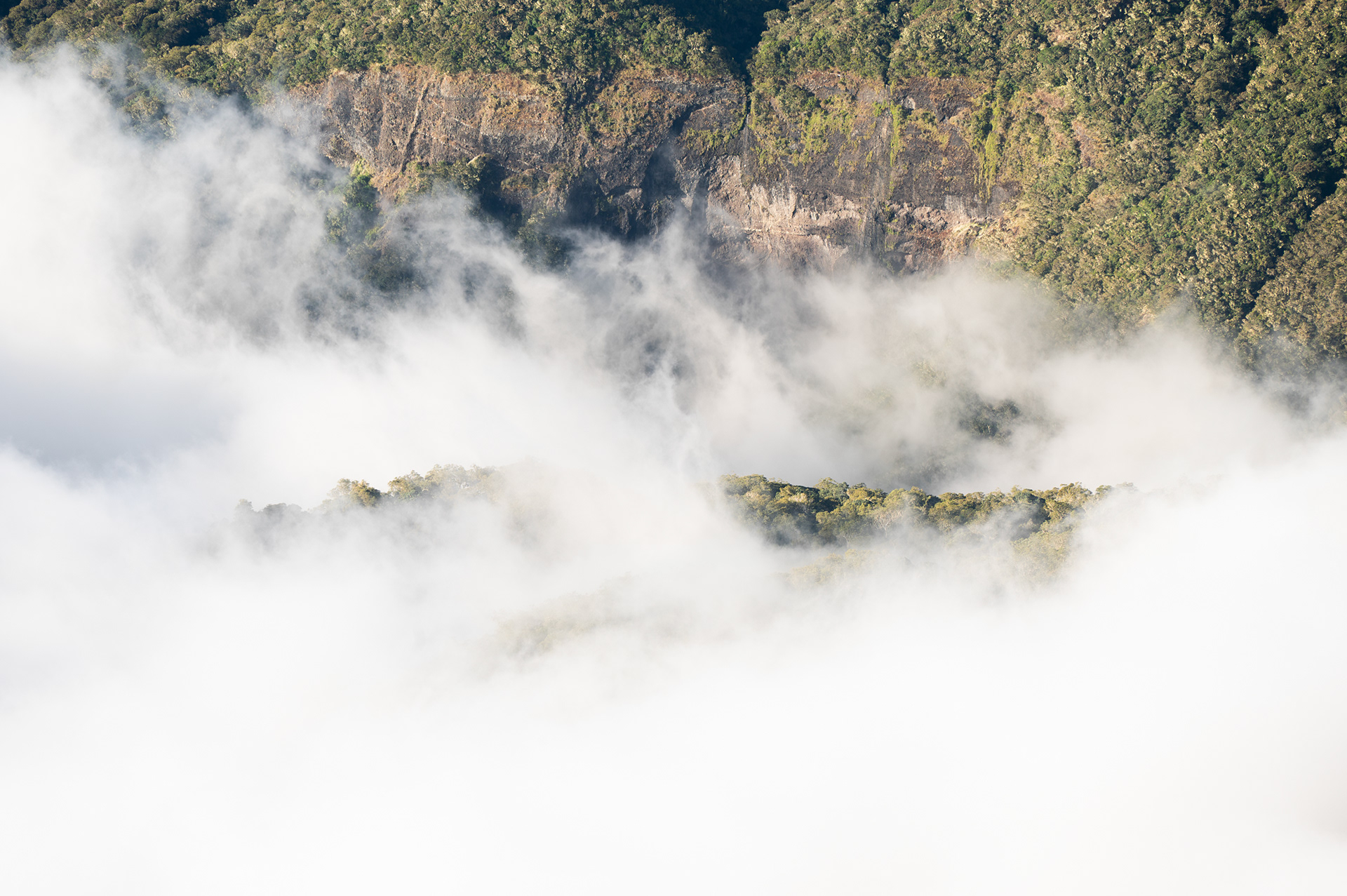
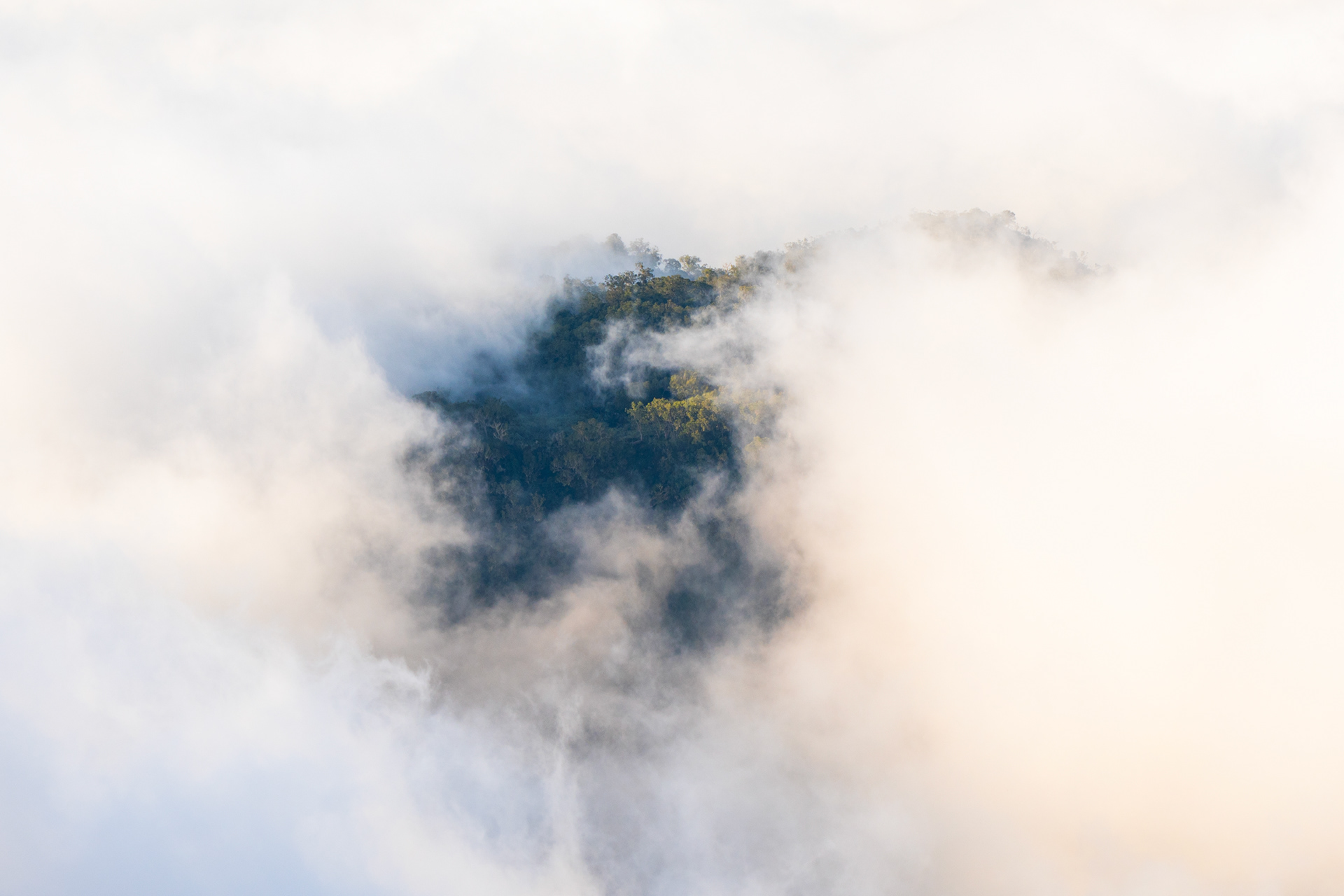
The most beautiful sunrise ever?
Perhaps I experienced one of the most beautiful sunrises of my life during my last morning in Mafate. The night before, I had spent the night at Îlet des Orangers, where I was the only guest at a campsite. The owner had prepared a delicious dinner for me (a kind of curry of chicken, lentils, and rice) in the traditional Creole way. During our conversation, I learned a lot and gained even more respect for the people who live here.
For example, when Jean Martel wants to go to the shop, he first walks 16 kilometers along the drainage canal until he reaches the nearest bus stop, where he takes the bus to Saint Paul, the largest city on the West Coast. After doing his shopping there, he takes the bus back to Maïdo, a mountain pass above Mafate, before descending again to Îlet des Orangiers with his backpack full of food. Time has a different dimension here...
My goal during my last morning was to climb Maïdo and enjoy one last sunrise. My alarm clock went off as early as 4:30 am, while it was still pitch black. I had over an hour and a half to reach the first mountain pass, some 500 meters up. To clarify, Îlet des Orangiers is at 900 meters altitude, Maïdo just under 2200 meters. Therefore, I still had a big climb ahead of me. Arriving at the mountain pass, I take off my rucksack and sit on the edge of the ridge.